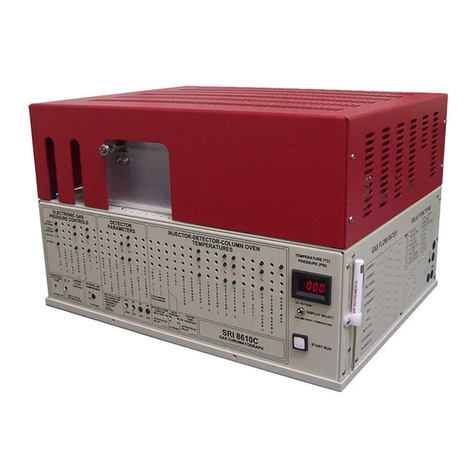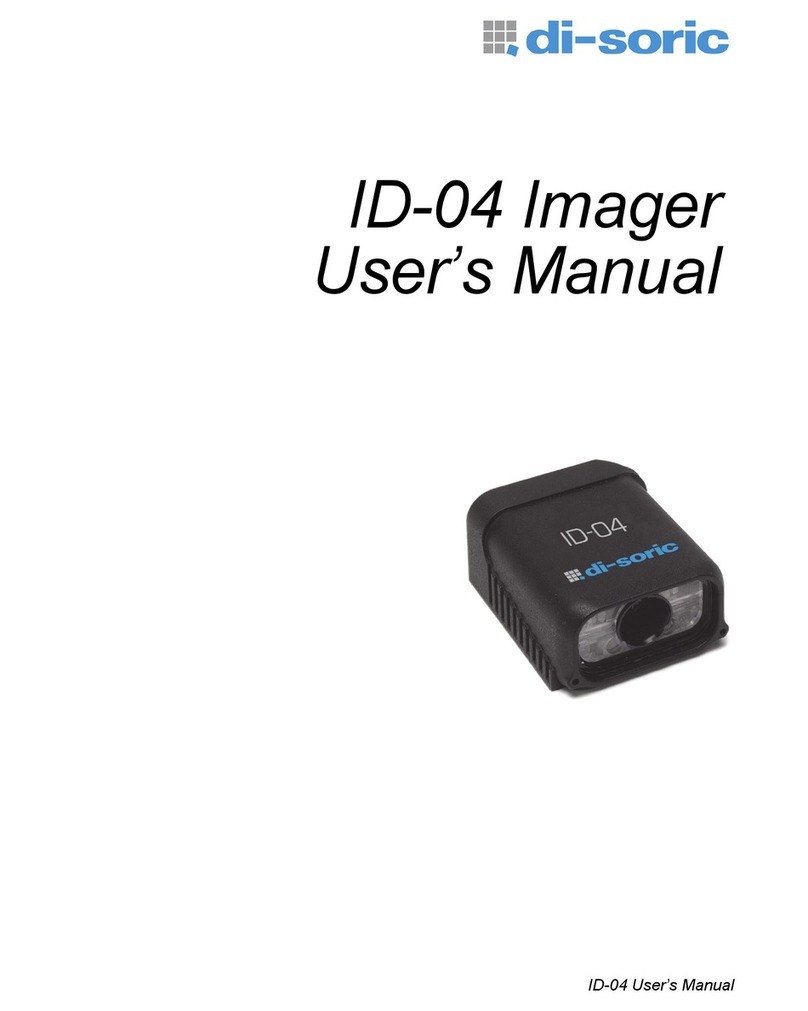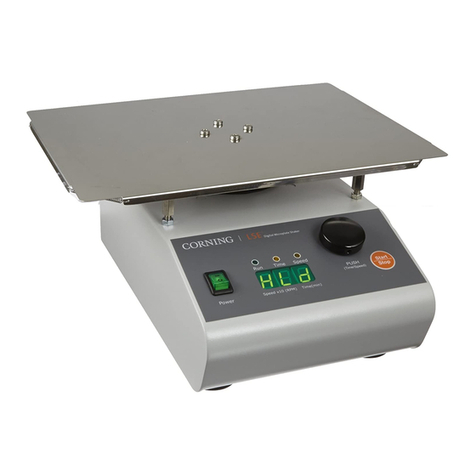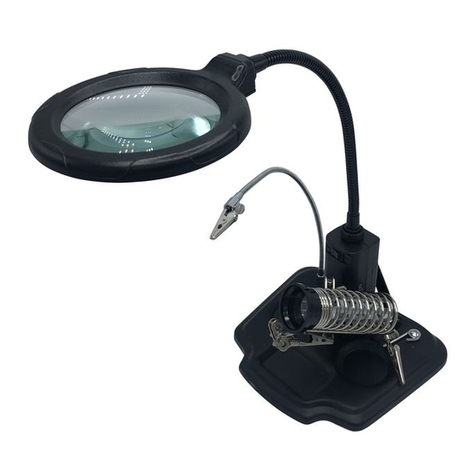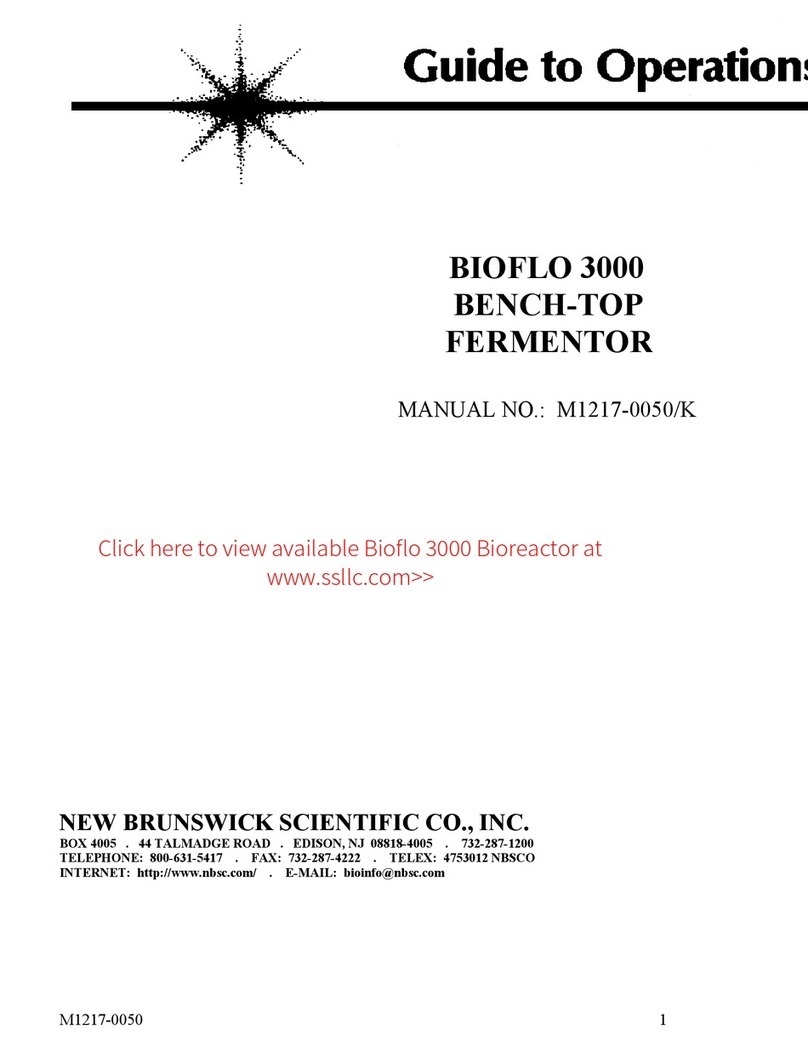Genrui WP21B User manual

I
About this Manual
Version No.: A/3
Release Date: April 25, 2016
© 2004-2016 Genrui Biotech Inc. All rights reserved.
Item No.: P01.91.300077-03
Statement
This manual will help you understand the operation and maintenance
of the product better. It is reminded that the product shall be used
strictly complying with this manual. User’s operation failing to comply
with this manual may result in malfunction or accident for which Genrui
Biotech Inc. (hereinafter called Genrui) cannot be held liable.
Genrui owns the copyrights of this manual. Without prior written
consent of Genrui, any materials contained in this manual shall not be
photocopied, reproduced or translated into other languages.
Materials protected by the copyright law, including but not limited to
confidential information such as technical information and patent
information are contained in this manual, the user shall not disclose
such information to any irrelevant third party.
The user shall understand that nothing in this manual grants him,
expressly or implicitly, any right or license to use any of the intellectual
properties of Genrui.
Genrui reserves the right to modify and update this manual without
11000010 (WP21B)/11000013 (WP21E)

II
prior notice.
Genrui reserves the final explanation right to this manual.
Warning
This system can only be operated by test professionals, doctors, lab
workers or personnel for system maintenance and troubleshooting,
who have been trained by Genrui.
It is important for the hospital or organization that employs this
equipment to carry out a reasonable maintenance schedule. Neglect of
this may result in machine breakdown or injury of human health.
Make sure to use the instrument under the provisions of this Operation
Manual. Otherwise, the instrument may not work normally, the test
result is unreliable and it may damage the instrument parts and
endanger people’s safety.
Customer Service Department
Manufacturer:
Genrui Biotech Inc.
Address:
6F, Shanshui Building B, Nanshan Yungu Innovation
Industrial Park, 1183 Liuxian Blvd, Nanshan District,
518055, Shenzhen, P.R. China
Website:
www.genrui-bio.com
E-mail
Address:
service@genrui-bio.com
Tel:
+86 755 26835560
Fax:
+86 755 26678789

III
Table of Contents
Chapter 1 Brief Introduction..............................................................1
1.1 Product overview...................................................................1
1.1.1 Brief introduction of this instrument ...............................1
1.1.2 Basic performance and parameters...............................1
1.1.3 Product structure and composition ................................3
1.1.4 Scope of application.......................................................3
1.2 Operation manual summary..................................................3
1.3 Symbols, screen printing, labels and figures.........................3
1.3.1 Symbols .........................................................................3
1.3.2 Screen printing and labels .............................................4
1.3.3 Figures...........................................................................5
1.4 Warranty and service.............................................................5
1.5 Training..................................................................................6
Chapter 2 Safety and Precautions ....................................................7
2.1 Safety.....................................................................................7
2.2 Precautions............................................................................8
Chapter 3 Installation .......................................................................11
3.1 Instrument models...............................................................11
3.2 Installation operators...........................................................11
3.3 Damage check.....................................................................11

IV
3.4 Packing list ..........................................................................12
3.5 Installation requirements .....................................................12
3.6 Instrument Installation .........................................................13
Chapter 4 Structure ..........................................................................15
4.1 Front view of the instrument................................................15
4.2 Diagram of operation panel.................................................15
4.3 Back view of the instrument ................................................16
4.4 Menu interface.....................................................................16
Chapter 5 Routine Operations.........................................................18
5.1 Measurement flowchart .......................................................18
5.2 Routine operations and precautions....................................19
5.3 Sample measurement .........................................................20
5.3.1 Aspirating the cleaning solution...................................23
5.3.2 Aspirating distilled water..............................................24
5.3.3 Aspirating blank solution..............................................25
5.3.4 Aspirating standard solution ........................................26
5.3.5 Aspirating sample solution...........................................27
5.3.6 Standby status .............................................................28
5.3.7 Setup............................................................................29
5.3.8 Search..........................................................................31
5.4 Testing examples.................................................................31
Chapter 6 Software Operation.........................................................35

V
6.1 QC review............................................................................35
6.2 Result review.......................................................................37
6.2.1 To edit samples............................................................37
6.2.2 To add results...............................................................39
6.2.3 To search results..........................................................41
6.3 Editing test items (Program)................................................43
6.3.1 To add an item and edit its parameters........................43
6.4 System setup.......................................................................50
6.4.1 Printing setup...............................................................50
6.4.2 Time setup ...................................................................51
6.4.3 COM setup...................................................................52
6.4.4 Contrast setup..............................................................52
6.5 System maintenance...........................................................53
6.5.1 Temperature adjustment..............................................53
6.5.2 Aspiration volume setting.............................................54
6.5.3 Aspiration adjustment ..................................................55
6.5.4 Absorbance testing ......................................................56
6.5.5 ADC adjustment...........................................................58
6.5.6 Restoration setting.......................................................59
Chapter 7 Daily Use and Maintenance............................................60
7.1 Daily maintenance and care................................................60
7.2 Explanation about elimination or reduction of instrument
downtime.........................................................................................61
7.3 Preventive maintenance and inspection for safety purpose62

VI
7.4 List of replaceable components...........................................62
7.5 Common faults and troubleshooting....................................63
Chapter 8 Transportation and Storage...........................................66
8.1 Transportation......................................................................66
8.2 Storage................................................................................66
8.3 Graphic explanations on the outer package........................66
Chapter 9 Commonly-used Consumables and Ordering
Information........................................................................................68
Appendix ...........................................................................................70
Appendix 1 Replace printing paper.................................................70
Appendix 2 Replace pump tubes....................................................71
Appendix 3 Clean the cuvette.........................................................72
Appendix 4 COM communication ...................................................73
Appendix 5 List of test items and test combinations.......................75
Appendix 6 Hazardous substances ................................................78

WP21 Series Operation Manual Chapter 1 Brief Introduction
1
Chapter 1 Brief Introduction
1.1 Product overview
1.1.1 Brief introduction of this instrument
Product name: Semi-auto Chemistry Analyzer
Safety classification: Electric-Shock Safeguard Level I, Overvoltage
Category II, Pollution Degree II
Regulatory classification: A kind of biochemical analysis system in the
category of analyzing instruments for clinical tests (6840), Regulatory
Class II
Operation mode: Continuous running
1.1.2 Basic performance and parameters
Basic performance
Deviation of
filter accuracy
Within ±3nm
Filter half-width
≤12nm
Stray light
Absorbance ≥ 2.5
Absorbance
linearity
For absorbance values in the range of
0.2~0.5, linear error is within ±5%.
For absorbance values in the range of
0.5~1.0, linear error is within ±4%.
For absorbance values in the range of
1.0~1.8, linear error is within ±2%.

WP21 Series Operation Manual Chapter 1 Brief Introduction
2
Absorbance
stability
At 340nm, the absorbance change in 20
minutes should not be greater than 0.005.
Absorbance
repeatability
It is expressed with coefficient of variation
(CV) and the value should not be greater
than 1.0%
Temperature
accuracy and
fluctuation
Temperature deviation ≤ ±0.3℃,
fluctuation ≤ ±0.2℃
Sample
carryover rate
≤ 1%
Intra-batch
clinical
precision
(CV%)
ALT ≤ 5%, TP ≤ 2.5%, UREA ≤ 3.5%
Basic parameters
Wavelength selector
Filtering
Type of absorption cells
Flow cells
Analysis methods
End-point, two-point, kinetic
methods, etc.
Wavelength
340, 380, 405, 505, 546, 578, 620
and 700nm (optional)
Power
≤180VA
Net weight
About 6kg

WP21 Series Operation Manual Chapter 1 Brief Introduction
3
1.1.3 Product structure and composition
This instrument consists of a microprocessor, a main board, a
power-supply system, a sampling system, a colorimetric system, a
monitor and a printer.
1.1.4 Scope of application
This instrument is applicable to quantitative analysis of clinical
biochemistry items in medical institutions.
1.2 Operation manual summary
This operation manual mainly intends to help users learn about the
safety, installation, structure, analysis principle, operating procedures,
maintenance and service, problems and troubleshooting, etc. of the
semi-auto chemistry analyzer. Please follow this manual to operate the
instrument.
Note:
This manual may be revised appropriately without prior
notice.
1.3 Symbols, screen printing, labels and figures
1.3.1 Symbols
The following symbols listed in the table below are applicable to this
manual.
Symbol
Meaning
Biohazard!
The background color of this symbol is yellow, the
symbol itself and the outline is black.

WP21 Series Operation Manual Chapter 1 Brief Introduction
4
Symbol
Meaning
May cause electric shock
High temperature, which may lead to personal injury
Strong light, which may lead to eye injury
1.3.2 Screen printing and labels
The following screen printing and labels listed in the table below are
applicable to this manual.
Label
Meaning
Serial number of the product
Equipotential terminal, connected with the ground cable
Production date
In vitro diagnostic devices, only for in vitro auxiliary
diagnosis
~
Alternating current
Power ON

WP21 Series Operation Manual Chapter 1 Brief Introduction
5
Label
Meaning
Power OFF
POWER
Main power supply
WASTE
Outlet of waste liquid
COM
RS232
Communication port, which can connect with the software
system in the testing department
1.3.3 Figures
Figures in this manual are only for illustration or examples, not for other
purposes. Subject to the real object while in operation, modification
may be made without prior notice.
1.4 Warranty and service
Genrui warrants that this product will be free from defects in materials
and workmanship that occur within the warranty period. This warranty
shall not apply to damages caused by the following situations:
1) Operation environment does not meet the specified requirements;
2) Not use the specified power supply or power supply is abnormal;
3) Man-made damage;
4) Non Genrui authorized personnel making the repair;
5) Other irresistible natural factors, such as earthquakes, fires, war,
etc.
6) Damage caused by accidents.
7) Replacement or removal of serial number label and manufacture
label.
If a product covered by this warranty is determined to be defective

WP21 Series Operation Manual Chapter 1 Brief Introduction
6
because of defective materials, components, or workmanship, and the
warranty claim is made within the warranty period, Genrui will, at its
discretion, repair or replace the defective part(s) free of charge. Genrui
will not provide a substitute product for use when the defective product
is being repaired.
1.5 Training
In order to help users properly use the analyzer and give full play to its
performance, Genrui holds periodical free training for users throughout
the world, please visit Genrui website or contact the local offices to get
the training schedule.
Only personnel trained by Genrui or its authorized distributors can
operate this instrument, otherwise it may damage the protection
provided by the instrument.
Please carefully read this manual and the related reagents instructions,
if not operating in accordance with the provisions of this instrument
manual, it may damage the provided protection or greatly affect the
test results.

WP21 Series Operation Manual Chapter 2 Safety and Precautions
7
Chapter 2 Safety and Precautions
The following are the warning symbols related to the analyzer, if ignore
these symbols, the users may run the risk of death or serious injury.
The following warning symbols are not sorted by their importance. All
the symbols have the equivalent importance.
2.1 Safety
Electric Shock
1) When the power supply is turned on, any person except
authorized service technicians is prohibited to open the
analyzer panel.
2) Avoid spilling any liquid onto the instrument tabletop. If
some liquid splashes into the analyzer, please cut off the
power supply immediately and contact Genrui promptly.
High Temperature
1) Before exchanging the bulb, please cut off the electricity
and wait at least 30 minutes until the bulb cools down.
2) You may be scalded if touching the print head and the
metal part around it.
Strong Light
Do not stare at the beams from the bulb. Otherwise your
eyes may be injured.

WP21 Series Operation Manual Chapter 2 Safety and Precautions
8
Biohazard
1) All the test samples, quality controls and standards
should be regarded as infectious. Please wear gloves when
contacting them.
2) All the wastes should be regarded as infectious and thus
you should wear gloves when contacting them. The
components touched with a test sample, such as pipetting
tips, cuvettes and measuring cups should be regarded as
infectious; so, you should wear gloves when contacting
them.
3) All the wastes are potentially infectious and should be
regarded as medical wastes and disposed according to the
current regulatory requirements.
4) When the service life of the instrument ends, it should be
disposed of as per local requirements for environmental
protection, and it cannot be disposed of and discarded as
common wastes.
2.2 Precautions
Scope of Application
This instrument is applicable to quantitative analysis of
clinical biochemistry items in medical institutions.
Operators
The analyzer can only be used by personnel who have
been trained and authorized by Genrui or its
representatives.
Actions in Case of Breakdown
If the instrument has a hazardous breakdown, such as fire,
strange smell, smoke or other dangerous situations, anyone
should directly cut off its electricity or the main power

WP21 Series Operation Manual Chapter 2 Safety and Precautions
9
supply, and then contact Genrui.
Application Environment
1) Please correctly install the instrument as per the
environmental conditions specified in this manual.
Otherwise, the test results obtained may be inaccurate and
the analyzer may be damaged.
2) If it is necessary to change its working environment,
please contact Genrui or its distributor in your region.
Electromagnetic Interference
1) The analyzer is susceptible to electromagnetic
interference during running, which may influence the test
results and lead to wrong operations. During its running,
please do not use devices generating electromagnetic
waves, such as electric drill, mobile phone and intercom.
2) The analyzer can emit electromagnetic waves during
running. Please do not install and use
electromagnetic-sensitive equipment near the analyzer.
Liquid Leakage
1) Check all the pipe connections before testing to verify if
there is leakage. Liquid leakage can make the aspiration
and dispensing volumes inaccurate.
2) Do not place reagents and samples on the analyzer
tabletop, to avoid liquid spillage and leakage.
Water Quality
The water quality should meet the following requirements.
Otherwise, the valves and pumps may be easily damaged
or cannot be cleaned:

WP21 Series Operation Manual Chapter 2 Safety and Precautions
10
•Particle diameter < 200μm
•Resistivity > 0.5MΩ/cm
•Colony count < 10cfu/ml
•Dissolved silicon < 0.1mg/L
Poor Grounding
1) The power supply must be correctly grounded.
Otherwise, there is the risk of electric shock.
2) The grounding impedance must be lower than 0.1Ω. Poor
grounding can cause unstable test results and housing
leakage, and thus there is the risk of electric shock.
Device Connection
1) For a device not permanently connected, please do not
place it at a location that is hard to disconnect.
2) For all the external switches or breakers and external
over-current protection systems, it is recommended to place
them near the analyzer.
3) The devices connecting with the COM RS232 port of this
analyzer should satisfy the requirements in the National
Standard GB 4793 of China.
Analysis Parameters
Incorrect analysis parameters may lead to false results. For
more information, please consult Genrui or the reagent
supplier.

WP21 Series Operation Manual Chapter 3 Installation
11
Chapter 3 Installation
3.1 Instrument models
This WP series can be divided into the following models:
WP21B: Involving seven wavelengths, i.e. 340, 380, 405, 505, 546,
578 and 620nm; a type of semi-auto chemistry analyzer with touch
screen
WP21E: Involving six wavelengths, i.e. 340, 405, 505, 546, 578 and
620nm; a type of semi-auto chemistry analyzer without touch screen
3.2 Installation operators
This analyzer can only be installed by Genrui personnel or its
authorized distributors, and the user should provide the required
environment and space. When you receive the analyzer, please notify
Genrui or the local distributor immediately.
3.3 Damage check
All the analyzer packages have been strictly examined by Genrui
personnel before shipment. When you receive the instrument, please
carefully check to verify whether there are the following damages
before opening the packaging box:
1) Inversion or deformity of the outer package.
2) Obvious moistened marks on the outer package.
3) Obvious crash marks on the outer package.
4) Indication of the outer package been opened.
Once you find any of the above issues, please do not open the
package and do not power on the instrument. Otherwise, it may lead to
electric shock. Please notify the local distributor immediately.

WP21 Series Operation Manual Chapter 3 Installation
12
If the outer package is intact, please open the packaging box and
check the items in the box at the presence of the distributor or Genrui
personnel:
1) Verify if all the components are equipped according to the packing
list.
2) Carefully check the appearance of all the components to verify
whether there is breakage, crash or deformity.
3.4 Packing list
Please check the Packing List in the instrument packaging box.
3.5 Installation requirements
Content
Requirements
Location
Flat tabletop with a tilt of < 1/200 and sufficient
intensity, which can bear the weight of 50kg;
Dust-free, without corrosive and inflammable
gases, free from heat or wind sources and
mechanical vibration;
Avoidance of direct sunlight and with good
ventilation
Space
Enough space to place the analyzer with the area
of at least 1m2
Temperature
10℃-30℃
Humidity
Relative humidity ≤ 70%
Atmospheric
pressure
70.0kPa-106.0kPa
Ventilation
Able to exchange air with the external environment,
smooth air flow, not directly blowing into the

WP21 Series Operation Manual Chapter 3 Installation
13
analyzer
Power supply
100-240V~, 50/60Hz, correctly grounded and the
grounding impedance is less than 0.1Ω.
Electromagnetic
waves
Do not close to an electric-brush engine or electric
devices which are frequently switched on/off.
3.6 Instrument Installation
1) Open the special packaging box of this analyzer and carefully
verify if the instrument and accessories in the box are consistent with
the packing list. If there is any loss or damage, please contact the
supplier at once.
2) If the articles in the box are correct, take out the instrument
carefully and put it on the stable and flat workbench.
3) Ground the grounding rod at the rear panel of this analyzer via an
earth wire specially designed for medical instruments (grounding
impedance < 0.1Ω).
4) Take out the power cable, plug one end into the power jack at the
rear panel and insert the other end into the grounded three-wire
socket.
5) The fuse used for this instrument is indicated as “F3AL250V”,
which is a type of glass-tube rapid-fusing device with double-cap
lead wires and has 3A of the rating current and 250V of the rating
voltage.
6) If the analyzer should be connected with the Laboratory
Information System (LIS) or Hospital Information System (HIS), take
out the serial port cable and connect one end to COM RS232 at the
instrument rear and the other end to the computer. The serial port is
set according to the instructions of LIS or HIS
7) For a device not permanently connected, please do not place it
at a location that is hard to disconnect.

WP21 Series Operation Manual Chapter 3 Installation
14
8) If different devices need to cooperate together, to achieve some
functions, a same reference potential is required, then it is necessary
to connect all the isoelectric terminals. Isoelectric connection can
inhibit potential difference, thereby eliminating electromagnetic
interference. If it is necessary to make an isoelectric connection, take
out the attached isoelectric grounding cable and insert it into the
isoelectric port.
This manual suits for next models
3
Table of contents
Popular Laboratory Equipment manuals by other brands
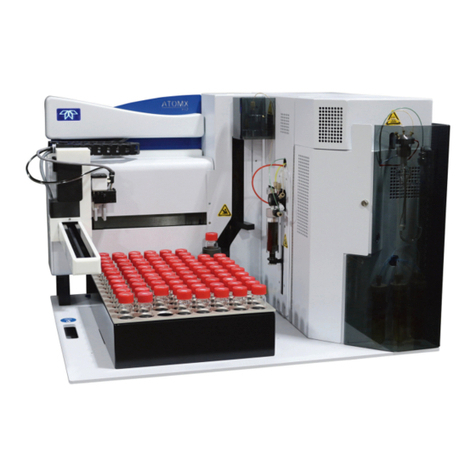
Teledyne Tekmar
Teledyne Tekmar Atomx XYZ user manual
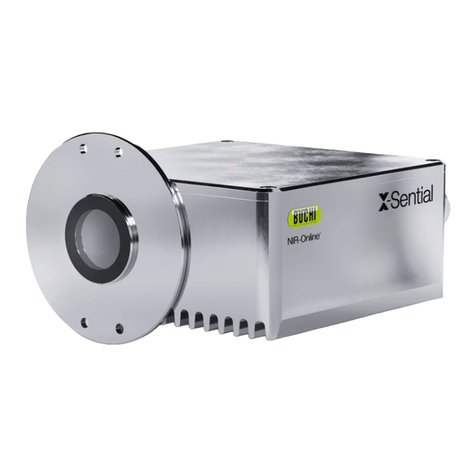
Buchi
Buchi NIR-Online X-Sential Operation manual

vacuubrand
vacuubrand MV 10C NT VARIO o.C. Instructions for use
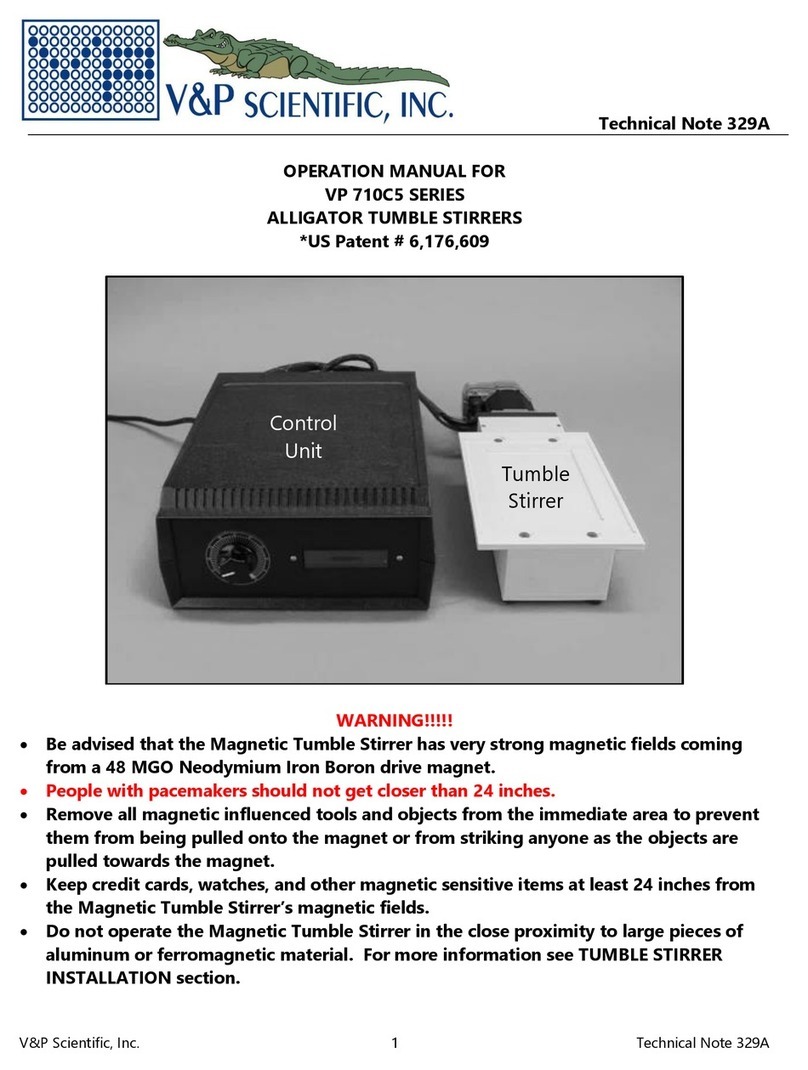
V&P Scientific
V&P Scientific VP 710C5 Series Operation manual

Promega
Promega GloMax quick start guide
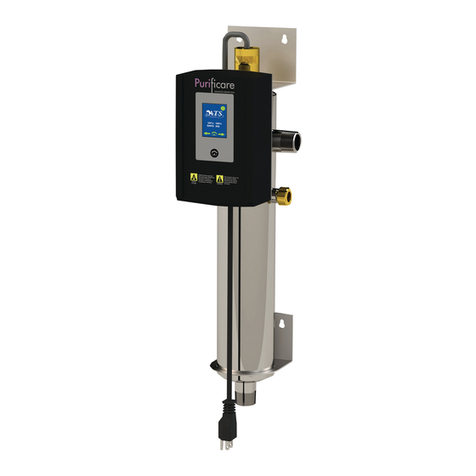
ATS
ATS Purificare PFC-8 Installation, operation and maintenance manual
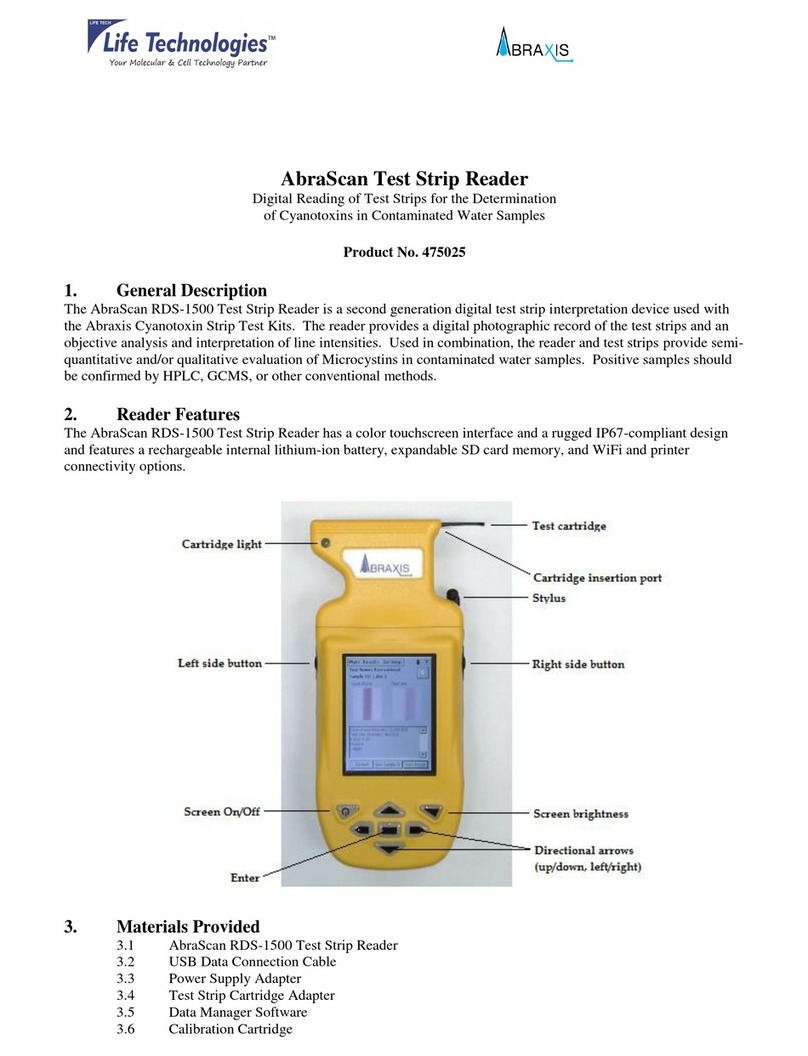
Life technologies
Life technologies AbraScan 475025 quick start guide
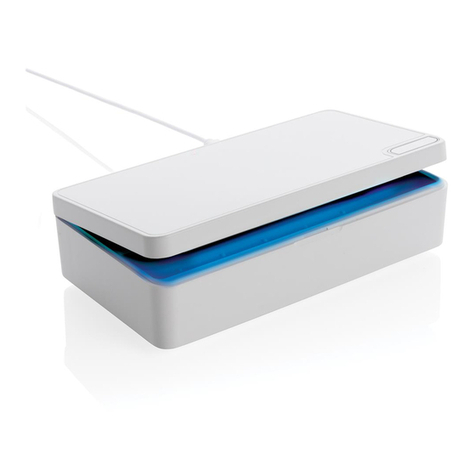
XD COLLECTION
XD COLLECTION P301.10X manual
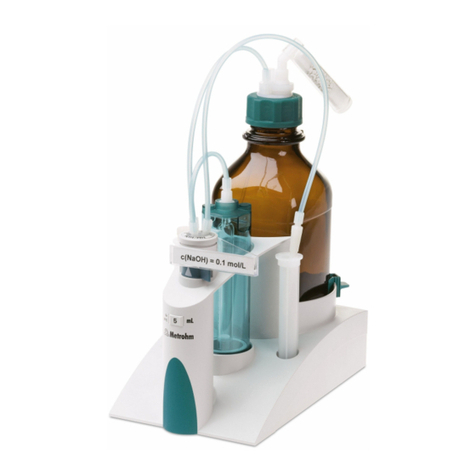
Metrohm
Metrohm 806 manual
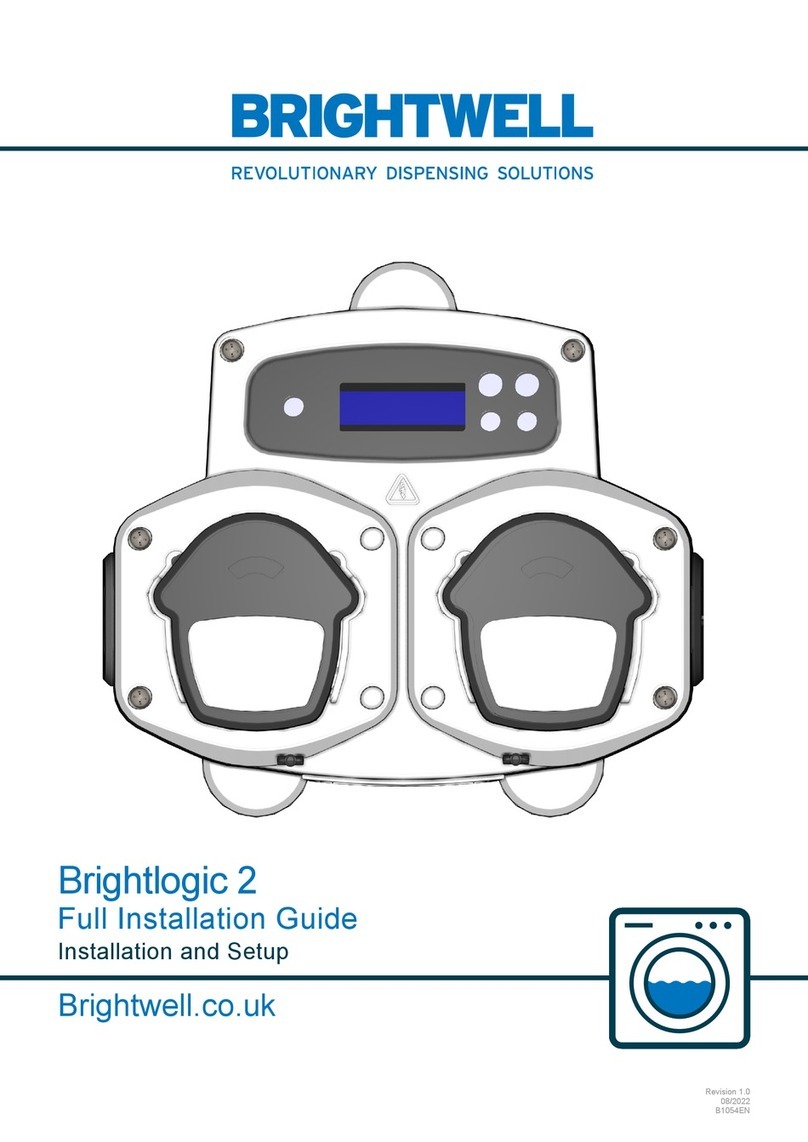
Brightwell
Brightwell Brightlogic 2 Full Installation Guide
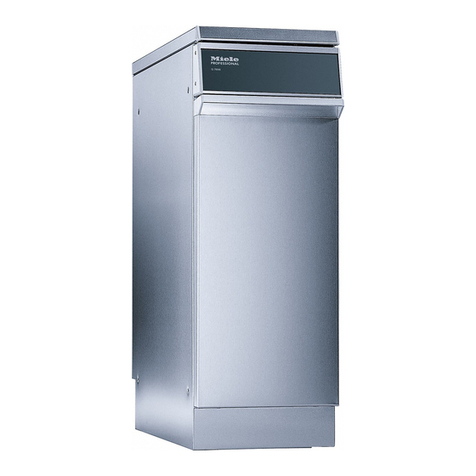
Miele professional
Miele professional DOS G 7896 operating instructions
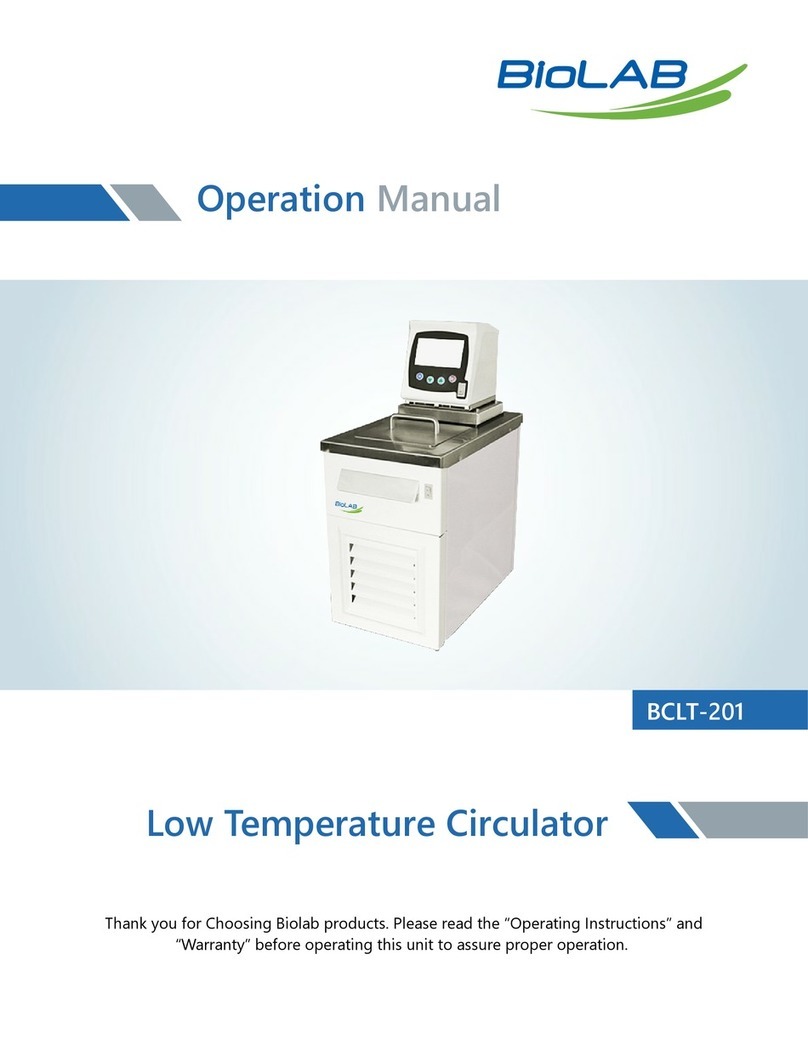
BioLAB
BioLAB BCLT-201 Operation manual
